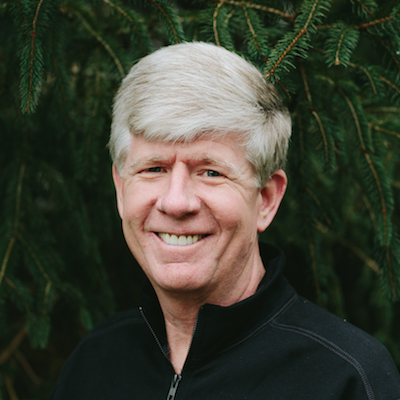Grandmother’s Recipe
Do you like to cook? Do you like to bake? Do you like to eat? I think we can all answer yes to that last question. Have you ever made a cake? Do you have a relative that makes a special cake better than anyone else makes it? In fact, that person is always asked to bring their recipe to the get-togethers because their cake or dessert is always better than anyone else can make it. Did you ever try to make a recipe from your grandmother and it just didn’t turn out like hers? Hers just tasted better. She just fixed the recipe in a certain way, in a certain order, in a certain pan, and it just tasted better.
A Leadership Cake
That’s the way leadership is. Leadership is like making a cake. To bake a cake, you have to have certain ingredients and tools, you have to put them together in a certain way, and you have to have a recipe. Leadership is the same. We have to have ingredients, tools, and a recipe to become transformational leaders. Most leaders have some of the ingredients and some of the tools. Few have a recipe for how and for what to use and for when to use them.Let’s Bake
In a cake, just like leadership, there are ingredients that don’t taste good on their own. Such ingredients as flour, baking powder, raw eggs don’t taste good on their own, but when you blend those with chocolate, some sugar, some milk, some butter, and put them in the right kind of a bowl and beat the tar out of them and blend them together, then that mixture starts tasting really good. Then you take that raw mixture and put it in an oven and you cook it at the right temperature. And when you cook it just right, there’s an aroma in the kitchen that starts smelling really good. Then when the timer goes off, you take a toothpick and poke it, which probably doesn’t feel good if you were the cake. Then when it’s cooled off, you put some icing on it. After that, you get another tool, a knife, to cut it, and then maybe you put it on a saucer and get another tool, a fork, to eat it. Or, maybe you don’t even need those last tools. You just pick up the piece with your fingers and eat it right out of your hand. And it tastes really good. If you bake the cake right, you enjoy the good ingredients and throw out the rest like the egg shells. Then you eat the right amount of cake and leave the rest.A Transformational Leadership Tool for the Leadership Cake Recipe
We all need a leadership cake recipe that will give us the tools, ingredients, and behaviors that will help all of us become a transformational leader. We have to ask ourselves if we are willing to go after the things that don’t taste good on their own, those things that, in other words, are uncomfortable to deal with, alongside those that do taste good on their own. Let me tell you about just one of the tools in our leadership cake recipe that we use that does taste good on its own.. Do you ever get tired of the endless meetings at work that seem to go on forever and never seem to accomplish anything? Do you ever get tired of what we’ve now reduced family suppers to, where no one talks to each other and everyone just grabs a plate and rushes off to their more important activities? Here’s one example of an important tool that we use in the recipe for transformational leadership. The W.A.D.E.L. model is a tool that helps you set the stage and conduct effective, meaningful, and interactive meetings, whether that meeting is a one-on-one meeting, with a group of colleagues and team members at work, or with family members around the supper table. The “W” stands for welcome. The beginning of the meeting is when you share pleasant greetings, give affirmations, and share some good news. For example, I say, “Tell me something good going on,” “What’s something fun you did over the weekend,” or “What’s something positive going on in your life?” Then, it’s time to ask questions, which is what the “A” in W.A.D.E.L. stands for. In a business setting, you might open the meeting by saying, “Here’s the agenda for the meeting. Is there anything else anyone might want to add to the agenda?” This doesn’t mean you have to get to everything that might be added, but it means you started the meeting by inviting the participants’ feedback. You might ask, “Are there any needs any of you have today that we might not be aware of?” If the meeting is around the dinner table, you might ask what concerns each one has that they need to talk about. The “D” is for discussion. It’s now time to enter the actual discussion portion of the meeting. In a one-on-one meeting, you might discuss each other’s concerns. In a family gathering, you might discuss the day’s events. Or the discussion might be a sales call, a family conversation, or a sports practice. But in an organizational meeting, there’s normally an agenda to be discussed. If time permits, discuss what was added during the asking questions time. The “E” represents empower. After the discussion, it’s time to define clear roles and responsibilities which enables the people in the room to go out and fulfill their roles about what was discussed. Before they leave the room, make sure each person knows what he or she is supposed to do and by when. When everyone returns to the next meeting, they can report back on what and how they’ve done. Finally, “L” means launch. As the meeting ends, encourage your team with a story, poem, or video that inspires and motivates the people to take action, to do what they agreed to do. Make sure people are encouraged as they leave the meeting to fulfill their roles that contribute to the vision or goals of the organization.Let’s Lead
W.A.D.E.L. is just one of the tools we use in our Transformational Leadership cake recipe that includes a “recipe” manual for leadership, along with some other tools, ingredients, and behaviors. As we learn together when to use each tool and ingredient, when to blend them together the way the recipe says, and how to do what the recipe calls for in the way the recipe calls for it, you and I can learn to make our Leadership Cake effective and productive.Ford Taylor is a leadership strategist, keynote speaker, and the author of Relactional Leadership. As the Founder of Transformational Leadership, he is known as a man who can solve complex business issues, with straightforward practical solutions, while maintaining his focus on people.



